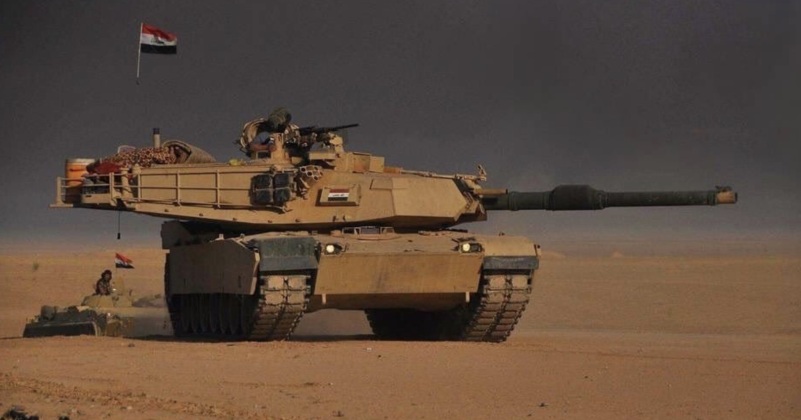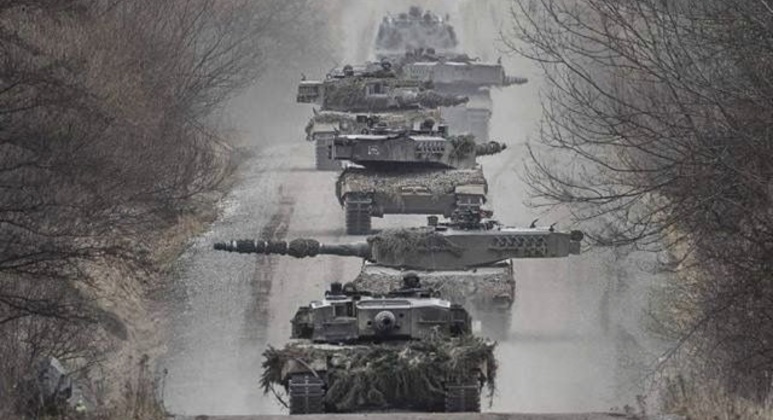Since shortly after the outbreak of the Russian-Ukrainian War in February widespread calls began to emerge in the West to supply the Ukrainian Army and possibly Kiev-aligned militias and contractors with Western main battle tanks to enhance their armoured warfare capabilities. Ukraine has since received tremendous quantities of armour from NATO member states that were formerly members of either the Warsaw Pact or parts of Yugoslavia, primarily T-72s but also more recently T-55s, which have high compatibility with the country’s large armoured forces made up of Soviet-built T-64 and T-72 tanks. The dispatch of Western-built tanks, however, appears increasingly unlikely to materialise despite Western arms shipments to Kiev amounting to tens of billions of dollars, with a number of factors being key to deterring suppliers. The only two classes of main battle tank in production in the West, the German Leopard II and American M1 Abrams, have both reportedly been considered and are in many ways similar designs as both were derived from the failed U.S.-German joint MBT-70 tank in the 1980s.
Four primary factors are expected to prevent the delivery of modern Western tanks to Ukraine for the foreseeable future and limit both the willingness of NATO members to supply such vehicles and the value they would have in the battlefield. The first is the serious threat that deliveries could pose to the Leopard II and M1 Abrams programs due to how much they are relied on by NATO and by Western-aligned states across the world. Tanks are among the easier pieces of equipment to capture due to their frontline roles, as opposed to artillery or aircraft which can still contribute to operations when based far behind friendly lines. The Abrams or Leopard II could thus both provide valuable intelligence to the Russian Military should even a single vehicle be captured, which remains a very significant possibility should they enter the war. While Russia has seen some of its most valuable tanks compromised through capture, with these expected to be passed on to NATO for study, Ukraine’s antiquated Cold War era vehicles are of little value to Russia in terms of intelligence.

The second and perhaps most significant factor is that the prior performances of both the Abrams and Leopard II against non state actors has raised significant questions regarding their effectiveness, with Turkish Leopard IIs and Iraqi Abrams tanks both having taken heavy losses to Islamic State and other militia groups while Saudi Abrams units have also seen losses in Yemen. In 2016 Turkish Army Leopard IIs in Al Bab in Syria’s Aleppo governate faced humiliating losses in combat to Islamic State weapons that were far from state of the art, with British media reporting that the tank showed “numerous faults exposed in lethal fashion.” Stars and Stripes assessed that the German tank’s reputation “has taken a pounding in battles with Islamic State militants,” with the National Interest describing a performance in combat that “shockingly illustrated” that they were “not so good armour after all.” They were “proven embarrassingly vulnerable in combat” despite not facing well armed adversaries. Turkish military leaders described their Leopard II units’ early engagements with IS as “trauma.”
The Turkish Army had similar experiences operating the vehicles against Kurdish militias, with Iraqi Abrams losses having been similarly extreme. Against the Russian Military serious losses by Leopard II and Abrams tanks, particularly against Russia’s own armour, would be a major embarrassment that could seriously reduce foreign interest in acquiring the designs. With both tanks being produced primarily for export, this would be particularly unfavourable as both face stringent competition particularly from more modern South Korean vehicles. The fact that export variants of the Abrams for Ukraine are unlikely to integrate depleted uranium armour or shells would further seriously limit their ability to engage Russian armour.

A third factor is cost, with even older variants of the M1 and Leopard II being far more expensive than the vehicles already provided to Ukraine and the former using fuel hungry and high maintenance gas turbine engines. Neither are manufactured on a large scale, meaning they would need to be drawn from reserve units which could cost billions to replenish. A fourth is that the tanks are not compatible with Ukraine’s existing armour inventories, with the integration of new calibers of ammunition being one among many issues this would cause. A fifth factor is that Western tanks, unlike Russian and Soviet ones, are too heavy to use civilian infrastructure in place such as bridges and roads, which would limit the usefulness of the Abrams or the Leopard II in the Ukrainian Army compared to more T-72s. The fact that Western tanks lack autoloaders and require 33% more crew, although being a significant drawback for some clients, is not expected to pose an issue in Ukraine due to its high mobilisation manpower which has outnumbered the Russian contingent in the country by over 5:1.

Although Spain, the Netherlands, Norway and Greece all use the Leopard II, none have filed for permission from Germany to supply them to Ukraine nor have Abrams operators shown any greater inclination to supply modern armour. While older Western tanks such as the Leopard I and M60 from the early 1960s could potentially be supplied from reserves, with little being lost if they are captured or conspicuously destroyed, their capabilities will be inferior to anything currently on the Ukrainian battlefield meaning they will be of limited use. Although Kiev is expected to continue to request deliveries of modern Western armour, this remains unlikely to materialise for the foreseeable future and potentially long after the war is over should the possibility of a resumption of hostilities with Russia remain.
